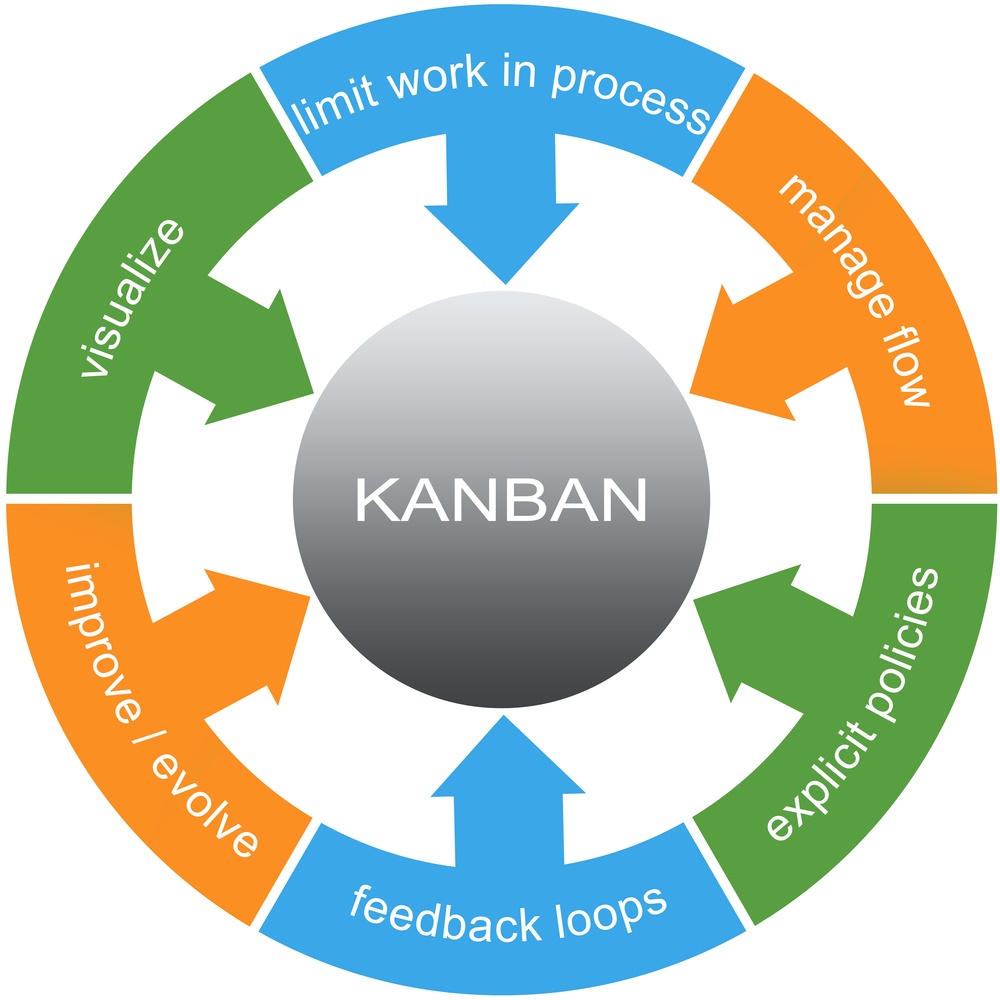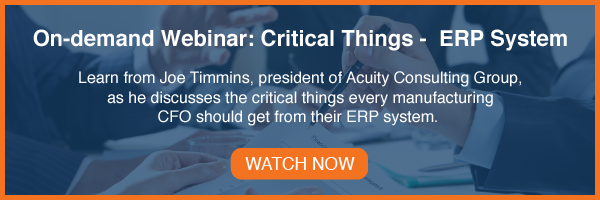Kanban vs MRP: The Answer Rests in Your Forecasting Skills
In a recent post, we discussed the value of implementing electronic Kanban (E-Kanban) into your modern ERP system. In this post, we’ll discuss some differences between manufacturing replenishment based on Kanban and MRP.
Kanban Basics
Here’s a quick review of Kanban. Kanban (Japanese for “card”) is a method of consumption-based replenishment. For shop floor consumption of purchased parts, this may be a three-pronged approach – one bin of parts (A) on the floor, one full bin (B) in inventory, and one full bin (C) at your supplier. The sizing of the bins is based on usage rate and replenishment time (but that’s another blog).
 When shop floor bin A becomes empty, your Kanban system notifies the warehouse, which sends out full bin B and requests new bin C from the supplier. This is most commonly a visual signal (e.g., a card, empty bin, or light) instead of a formal inventory transaction (e.g., issue, transfer, kit, or bin adjustment). However, there’s a financial implication – debit or credit – to the inventory that Kanban systems generally ignore; accounting catches up later … or maybe not.
When shop floor bin A becomes empty, your Kanban system notifies the warehouse, which sends out full bin B and requests new bin C from the supplier. This is most commonly a visual signal (e.g., a card, empty bin, or light) instead of a formal inventory transaction (e.g., issue, transfer, kit, or bin adjustment). However, there’s a financial implication – debit or credit – to the inventory that Kanban systems generally ignore; accounting catches up later … or maybe not.
All of this begs the question, “Then why do I need MRP?” The answer is, “Perhaps you don’t.”
MRP vs Kanban
Both MRP and Kanban have the same primary objectives: save money by maintaining low levels of inventory while keeping enough inventory on hand to meet customer demand, and both plan manufacturing, delivery, and repurchase of materials.
But although MRP and Kanban have the same goals, they achieve them differently.
MRP
MRP is a push-based manufacturing system, the success of which relies heavily on your ability to forecast demand accurately, which you typically do by a master schedule that feeds MRP. (To learn more, we recommend an APICS course and certification.) Your master schedule and MRP run dictate how much you’ll order, when you’ll order it, and under what terms. If your forecasts are inaccurate, you’ll be stuck with money-losing inventory or incur a stock-out.
Kanban
Kanban is a pull-based method of manufacturing supply wherein each Kanban signal is triggered by materials usage and the subsequent need for a replenishment action. Newer ERP systems have “E-Kanban” functions built in, offering workflow alerts and inventory transactions previously not handled by purely visual Kanban systems. Ultimately, a Kanban system must tie back to customer demand (i.e., the sales forecast and master schedule) to be sized properly.
In traditional MTS (make to stock) environments, this is based on maintaining planned inventory levels through production planning. Nowadays, more specialty short-run production is necessary for things such as web ordering direct to consumer and “one-off” custom production. Specialty production poses challenges to Kanban systems; where these systems still work best is for low dollar, common, shop issue items (for example, that five cent bolt you never want to run out of).
An advantage of E-Kanban is that it merges ERP functionality with the Kanban approach, which it previously did not. If deployed correctly, E-Kanban will eliminate material waste and reduce warehousing space.
Expert Help for Both Kanban and MRP
At Acuity, we’ve helped hundreds of manufacturers determine how solutions like MRP and Kanban will benefit their business. We’re excited about E-Kanban and how it, along with other technologies, continue to be part of new ERP systems, which continue to provide significant benefits to today’s manufacturers who are on Lean journeys. Contact us and we’ll help you make the decision that’s right for your business.




